HOW TO TRANSITION FROM CUTTING TO BULKING WHILE STAYING LEAN
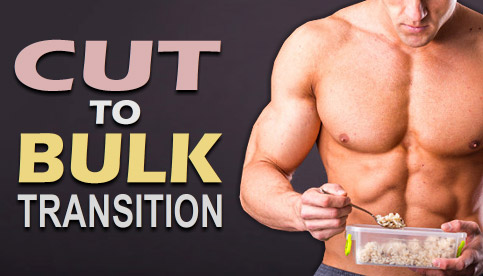
Is going from cutting to bulking really that complicated, or even necessary?
Say you just finished up your cutting phase. You’ve dropped the excess fat and have reached your desired level of leanness.
Now, it’s time to shift into muscle building mode and begin adding some more overall mass and strength to your frame.
Great, but what is the proper way to transition from cutting to bulking?
Well, there’s more to it than simply “eating more calories,” and if you want to keep fat gains under control during this period and maintain your leanness moving forward, it’s very important that you have a proper post diet plan in place.
Let’s go over the details…
The Importance Of Having A Structured Post Diet Plan
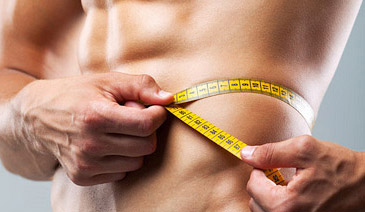
If you’re just coming off of a prolonged calorie deficit for fat loss, simply “eating on instinct” based purely on hunger and cravings is the last thing you should be doing during your cut to bulk transition.
This is how most average lifters go about it, and it’s exactly why so many end up putting on an excessive amount of unwanted fat (check out my dirty bulk fail for an extreme case) and undoing a good chunk of their cutting progress as a result.
See, your body is a very fine-tuned and adaptable system, and whenever you restrict your calories over any reasonable length of time, several important adjustments are made to help you conserve energy and to operate efficiently on fewer calories.
This process of “metabolic adaptation” is achieved through a variety of hormonal changes, where key fat burning hormones such as leptin, testosterone, and T3 are all decreased.
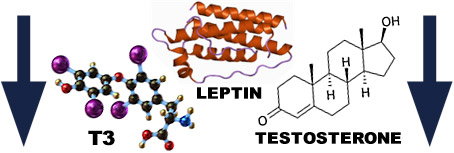
Remember, the basic hard-wired systems of your body aren’t concerned with your desire for ripped six pack abs or striated shoulders; all they really want to do is maintain a balanced state of homeostasis so that it can survive and reproduce effectively.
On top of this reduction in fat burning hormone levels, the process of “non-exercise activity thermogenesis” (or “NEAT” for short) also naturally decreases as a way to further reduce caloric expenditure.
NEAT involves all of the small actions you take throughout the day that you probably don’t even think about, such as fidgeting in your seat, pacing, tapping your fingers, small head movements etc.
You may not think these things really matter when it comes to fat loss, but NEAT can actually account for several hundred up to a thousand calories or more burned per day depending on the individual.
Let’s also not forget the simple fact that as you lose body weight, you won’t be carrying around as much total mass in general.
For example, moving a 200 pound body around throughout the day obviously requires a greater number of calories than moving a 175 pound body.
In addition to everything mentioned so far is the basic fact that your appetite and cravings will have significantly increased.
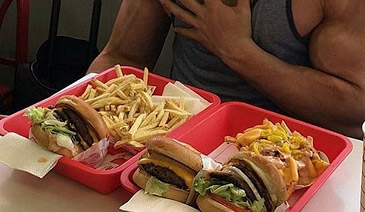
A simple bowl of veggies suddenly tastes incredible… foods that you normally wouldn’t give a second look become far more appealing… and since glucose levels have dropped, the willpower to resist them also decreases with it.
The bottom line here is that once your cutting phase has ended, your body will be physiologically primed for maximum fat storage and your desire for food will be at its highest at the same time.
This is why haphazardly increasing your calories without a concrete “cut to bulk plan” in place is almost always a recipe for disaster, and it’s why so many people end up regaining a large portion of the fat they lost during their diet.
It can be challenging enough to lose that initial fat and then simply maintain your physique afterwards, but when transitioning from cutting to bulking it becomes even tougher.
This is because many trainees will justify eating those large amounts of calories after their diet has ended by falling back on the “it’s okay, I’m bulking” mentality.
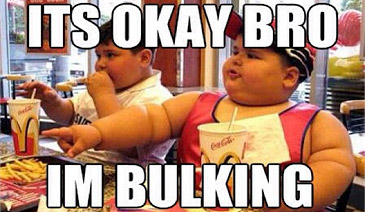
In reality, it only takes a relatively small surplus of a few hundred extra calories at most in order to maximize the body’s muscle building potential over any given day, and all of the calories that are consumed beyond that point will simply be stored as fat.
For that reason, large post-diet caloric increases are completely unnecessary and are actually downright counterproductive even if your goal is to put on mass. Going from cutting to bulking shouldn’t be that drastic.
Now, if you’re only going particularly high on calories for a day or two (via “cheat meals“) as a way of rewarding yourself once your cut is over, that will likely be fine and won’t cause any real damage as long as it doesn’t spiral out of control.
All in all though, the underlying approach of your cutting to bulking transition should be to increase your calories in a controlled manner so that you can move back to your maintenance level and into a surplus without going overboard.
You’ve worked very hard to get to this point, and the last thing you want to do is sabotage your results by throwing all dietary caution to the wind right at the exact time when your body is most primed for fat storage and when you’re most liable to over-eat.
So, what’s the best way to go about increasing your calories as you move from cutting to bulking?
Why Slow “Reverse Dieting” Is Not Necessary

Reverse dieting is a standard method that is used when transitioning from cutting to bulking, and it’s where calories are increased in small increments from week to week until the trainee gets back to their maintenance level.
Although this approach does seem to make sense at first glance since it keeps calories very tightly controlled and ensures that you don’t overshoot your intake, a reverse diet won’t be necessary for the vast majority of trainees.
This is because bumping up your calories by only 5-10% per week will actually keep you in a net calorie deficit throughout the reverse diet and will simply prolong the amount of time takes to get your metabolism re-elevated and your hormones and appetite back in check.
If you’ve already reached your desired level of leanness and are not aiming to lose any more fat, following a slow and drawn out approach like this will only make things unnecessarily harder on you.
Instead, your goal should be to begin eating right at your calorie maintenance level as soon as your cut is over.
That way, your body can get back to functioning at its peak as quickly as possible and you can move straight into your lean bulking phase without wasting any time.
Remember, your calorie maintenance level is the intake required to maintain your current weight. As long as you go about it properly, there’s no danger of any sudden gains in body fat.
How To Calculate Your New Calorie Maintenance Level
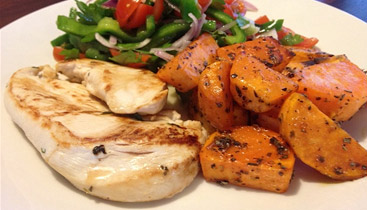
Eating back at maintenance seems simple enough, but the big mistake most lifters make here is in failing to realize that their calorie maintenance level at the end of a cut is NOT the same as it was at the beginning.
Since your body is now expending fewer total calories due to your down-regulated metabolism and decreased body weight, your calorie maintenance level will have decreased as well.
For example, a common scenario you might see is a trainee who started off with a maintenance level of 3000 calories… started their cut at 2500 calories… ended their cut at 2000 calories… and once the cut has ended they immediately jump right back to 3000 calories, or possibly even add a few hundred more on top trying to create an extra surplus for muscle growth.
In reality, their actual maintenance level may now be closer to 2500 calories as opposed to 3000, and their daily intake for muscle growth may be more like 2800 calories rather than 3300.
So, how do you calculate your new calorie maintenance level in order to begin a proper cut to bulk transition?
There’s no “perfect” way to calculate this with 100% accuracy, but assuming you’ve cut down to a level of leanness that is appropriate to begin bulking from (approximately 12% give or take for a male and about 20% for a female), a basic body weight multiplier should work fine as an initial starting point.
I generally recommend multiplying body weight in pounds by 14-16 to estimate maintenance calories, but with the metabolic slow-down that has occurred at the end of a cut, going with the lower end of 14 is probably the best approach just to be on the safe side.
Another method you can use is to base your calorie maintenance level off of your previous rate of weight loss.
In other words, if you were losing roughly 1 pound per week toward the end of your cut (a standard rate of weight loss), this would represent roughly a 500 calorie daily deficit since 1 pound of fat contains about 3500 calories.
In that case, you could simply add 500 calories back to your current intake which should put you right around your maintenance level.
Keep in mind that you’ll likely experience a small amount of immediate weight gain once you bump up your calories, but this is simply due to increases in muscle glycogen, water retention, and increased food volume rather than gains in body fat.
Give that initial increase a few days to settle in, and from there, monitor the scale with the goal of finding the calorie intake that causes your current body weight to stabilize.
If your weight is remaining relatively consistent from day to day, you’ll know that you’ve found your new maintenance level.
On the other hand, if your weight is still decreasing despite the higher calorie intake, continue to bump things up by adding in 100 calories or so every 4-5 days until your weight does plateau.
Moving From Maintenance Into A Calorie Surplus
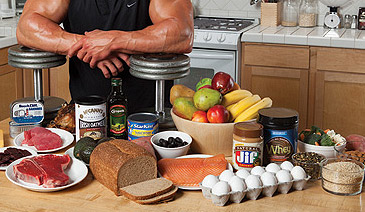
Once you’ve landed on your approximate new calorie maintenance level, you can then complete your cutting to bulking transition by moving into a calorie surplus for muscle growth.
Anywhere from around a 200-350 calorie surplus will be appropriate, with beginners selecting the higher end (since they’ll have the highest potential for gaining muscle) and intermediates going with the lower end.
Advanced trainees can go even lower than this at about a 100-150 calorie surplus per day, since muscle gains will have slowed down quite a bit by that stage and only a small surplus will be needed to optimize your gains.
Also keep in mind that once you increase your calories following a cutting phase, your resting caloric expenditure will also begin to increase as your fat burning hormone levels come back into balance and your metabolism re-adjusts itself.
So, even though your maintenance calories and calorie surplus target may seem a bit low at the outset, you should be able to gradually push them higher and steadily consume more food as the weeks go on without any accompanying gains in body fat.
How To Bulk After Cutting: Quick Recap

Dieting for significant fat loss is a tough process that requires self-control and discipline, and the last thing you want to do is throw all that effort down the drain by not handling your post-dieting period with care.
With your newly adapted metabolism and the natural spike in hunger that comes with dieting, carelessly “eating on the fly” and fully giving in to your hunger and cravings (some might even call it “intuitive eating“) is one of the most dangerous things you can do if you want to maintain the new level of leanness you’ve achieved.
That said, there’s no need to turn this into an overly complex and drawn out process, and the switch from cutting to bulking is still relatively simple overall. The most important thing is to have a plan and to control your calorie increases.
To do this, simply:
- Find your new approximate calorie maintenance level using one of the two methods described above and begin immediately eating at that level when your cut has ended.
- Monitor the scale and find the calorie intake that stabilizes your current body weight, increasing if necessary until you land on the appropriate figure.
- Shift into a lean bulking phase by adding in a moderate calorie surplus to support muscle growth.
In comparison to the commonly used “reverse dieting” approach, this method will get you back to your physical and mental peak as quickly as possible while keeping fat gains to a minimum, and while allowing you to shift straight into muscle building mode without wasting any unnecessary time and effort.
If you found this article helpful, make sure to sign up for your FREE custom fitness plan below...
 [featured_comment]
[featured_comment]



